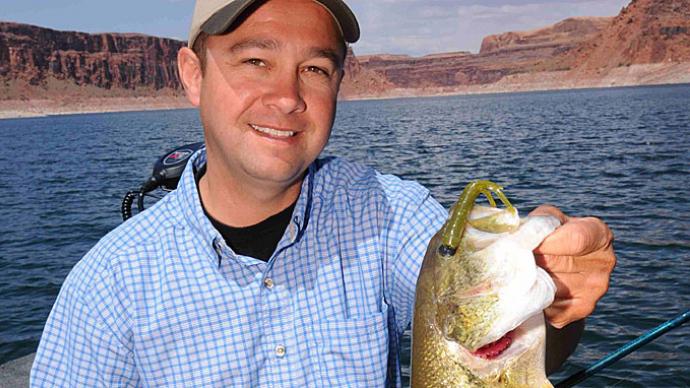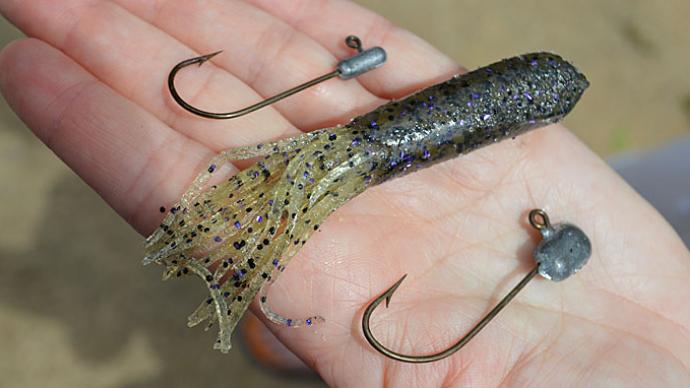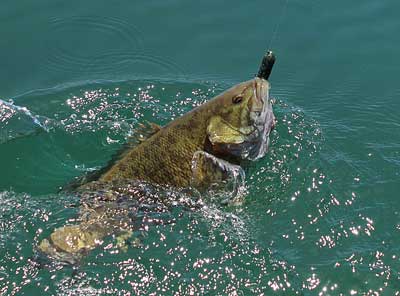
Most soft plastics in bass fishing do something, whether undulating under the surface or making wild movements with flapping appendages and tails, but a tube hardly does. Nevertheless, the simple hollow body and slits creating the tails have been very effective for decades. Tube baits have performed so well for many years because they are an excellent imitation of crawfish, baitfish, gobies, and other forage.
They've stood the test of time because they are simple to fish and because they catch bass.
Rigging a Tube
The tube bait can be rigged in several ways, including Texas-rigged when fished along the bottom or flipping and pitching to shallow cover. However, the most common way to fish a tube would be on a jighead.
There are several designs of tube jigheads with slim weighted sections that can be inserted into the body of the tube. Quickly lubricating the jighead with saliva or scent will make this process quick and easy. These jighead designs are for fishing tube baits, available in many different weights to fit any situation.
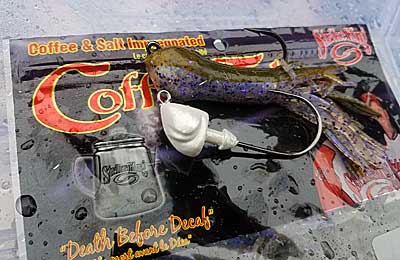
Any jighead will work for tubes; sometimes, adding a bulkier jighead is the way to go. The heavier weights of these jigheads get the bait down quickly and help it stay there in times of swift current and deep water. The larger head is also commonly done in the Great Lakes region as it helps imitate the profile of a goby with a large head and tapered body.
Another choice for rigging tubes blends the Texas rig, and jighead in a weedless method often called the "Stupid Rig." Rigging a tube this way allows a weighted head to give the bait a unique, spiraling action when retrieved.
Picking the Right Tube
The tube is such a proven design that almost every lure maker has a version, and they are generally nearly identical. The difference in tubes usually comes down to the sizes offered and allows the angler to downsize when needed or go up to a larger size when targeting bigger fish.
The Gitzit is known as the original tube bait, and the 3.5-inch size is universally accepted, but there are much smaller and much larger alternatives. The biggest thing to remember is to match the forage size in your waters and pick a color accordingly. It's hard to beat anything that resembles a crawfish, but a rainbow of colors is available to anglers.
Fishing a Tube
The tube is a do-nothing lure you can fish simply by dragging along the bottom. It catches a fair share of bass and is one of the easiest ways to get started with fishing tubes, but it's still a method used by the most seasoned bass anglers. Fishing a tube this way excels in cold water conditions when bass don't want to chase something.

"Cracking a tube" is another proven way to fish a tube. Anglers impart action with the rod to get the bait to jerk upwards before spiraling back down to the bottom. It's a valuable way to catch fish when fishing a tube around scattered grass, as the ripping action will free the bait from the grass and help generate a reaction from a bass. This method is reliable for fishing tube baits in the warmer months.
Where to Fish Tube Baits
One of the benefits of tube baits is that they can be fished everywhere, from shallow wood for largemouth when Texas-rigged to deep, rocky areas for smallmouth. There is no wrong place to use them, but they are at their best when fished in the same places crawfish live.
Crawfish habitat could be clay banks or rocky points, offshore rock piles, humps, and other areas that congregate crawfish. As a rule, some of the snaggiest areas are also the best for fishing tubes. However, losing tubes and jigheads to the bottom is part of the game, and every experienced tube angler will have several more rigged up and ready to go to battle when one is broken off.
Other key places to fish tubes are in creeks, streams, and rivers, and they are deadly when they drift slowly along the bottom. The natural flow of water helps to move the bait naturally, which makes tubes some of the most effective lures for fishing current.
Gear for Tubes
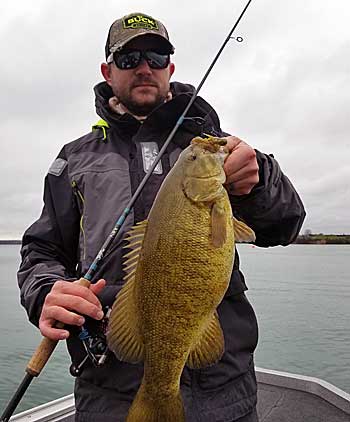
Spinning gear and light lines are typically used for tube fishing, but it's not required. A standard seven-foot medium spinning rod, quality reel, and a braided line to fluorocarbon leader are great places to start fishing a tube.
Spinning gear allows for effortless long-distance casts, and the ability to fight hard-fighting fish on the light line is a bonus. Combining braid with a fluorocarbon leader offers the best blend of sensitivity and strength from your line, and the braided line will significantly increase your casting distance. A 15-pound Seaguar Smackdown braid with an 8-pound Gold Label fluorocarbon leader is a good place to start. Anglers can upsize their fluorocarbon leader pound test if fishing around excessive rocks or targeting fish in waters with zebra mussels that have a knack for damaging the line.
The tube is one of the most uncomplicated and unassuming lures in your tackle box, but they work great. Fishing a tube is something that every bass angler should learn as they are among the best soft plastic lures ever made.
BassResource may receive a portion of revenues if you make a purchase using a link above.


